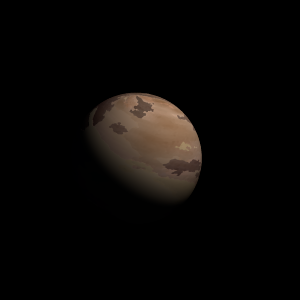|
|
Space Astro
|
Info for exoplanet "Arhynome"
| Scientific (actual) data |
|---|
| Name | Kepler-1287 b |
| Planet status | Confirmed |
| Radius | 0.137 |
| Orbital period | 11.4769 |
| Discovered | 2016 |
| Updated | 2021-02-05 |
| Tconj | 2454970 |
| Publication | Announced on a website |
| Detection type | Primary Transit |
| Alternate names | 2MASS J19163231+4703467 b, K02602.01, KIC 10068659 b, KOI-2602 b, KOI-2602.01, WISE J191632.31+470346.8 b |
| Star name | Kepler-1287 |
| Right ascension | 289.14° |
| Declination | 47.06° |
| Mag j | 13.925 |
| Mag h | 13.54 |
| Mag k | 13.505 |
| Star distance | 1027 |
| Star metallicity | -0.05 |
| Star mass | 0.96 |
| Star radius | 0.94 |
| Star age | 4.07 |
| Star temperature | 5715 |
| Star alternate names | 2MASS J19163231+4703467, KIC 10068659, KOI-2602, WISE J191632.31+470346.8 |
| Wikipedia article | Kepler-1287 b |
Back
| |
| Fictional info (?) |
|---|
| Suggested name | Arhynome |
| Planet type | Cold planet |
| Its orbital period around Kepler-1287 of 11 earth days is the longest of all the planets in its solar system.
. The 2H2O has probably photodissociated, and the free carbon monoxide has been swept into interplanetary space by the solar wind because of the lack of a molecular hydrogen layer. |
| Atmosphere | Carbon monoxide | 34% |
| Hydrogen peroxide | 26% |
| 2H2O | 26% |
| Molecular hydrogen | 5.6% |
| Hydrogen chloride | 5.1% |
| Ozone | 2.1% |
| Carbon dioxide | 0.038% |
| Neon | 0.00019% |
| Atmospheric pressure | 0.007 bar |
 |
| No known satellites |
| Google search for Arhynome |
|
Website by Joachim Michaelis
|
|
|
|